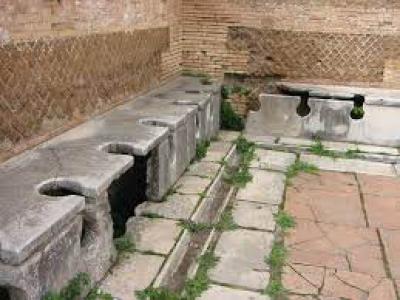Just before we took public health distancing measures, we heard a talk by AJ White, whose research involves, among other things, chemical studies of ancient fecal matter to explore human population dynamics. AJ gave a fascinating brown bag talk in 2018 about his work at Cahokia, which he has recently published in the journal Antiquity.
To start, here is AJ's 2018 talk and here is a recent blog post that describes his research and links to his Antiquity paper.
This topic relates to our currently widely shared anxieties about the availability of toilet paper. If I may draw your attention away from counting and rationing your remaining squares, let's have a look at some of the research on ancient toilets and what other ways that poop can tell us about the past.
Here is a (timely!) introduction to the topic from a recent SAPIENS.org article: What did Ancient Romans do without Toilet Paper?
In this article, the author Stephen Nash states that "... defecation and urination are more than biological functions; they are cultural activities that involve artifacts and technologies that change through time."
Exploring these artifacts and technologies takes us to some of the many, many resources about ancient Roman sanitation. Here are just a few:
- How the Toilet Changed History (7 minute PBS video)
- Roman baths (1-hour PBS documentary / Nova special)
- How They Did It- Going to the Bathroom in Ancient Rome (6 minute video)
- A Guide to Roman Latrines (5 minute video)
And for something a little closer in time and space, check out this lecture about privies in Boston's North End and Secrets of a Brothel Privy, also from the North End.
And since we're on a roll about this topic, you may want to review The Private Life of the Privy: A Secret History of Toilets. This was a course taught last fall by Dr. Jennifer Bates, Postdoctoral Research Associate in Archaeology, Joukowsky Institute for Archaeology and the Ancient World at Brown (ha!) University. The course website curates dozens of research papers about privies (or, you can wistfully think of them as "toilet papers"): https://canvas.brown.edu/courses/1077098






